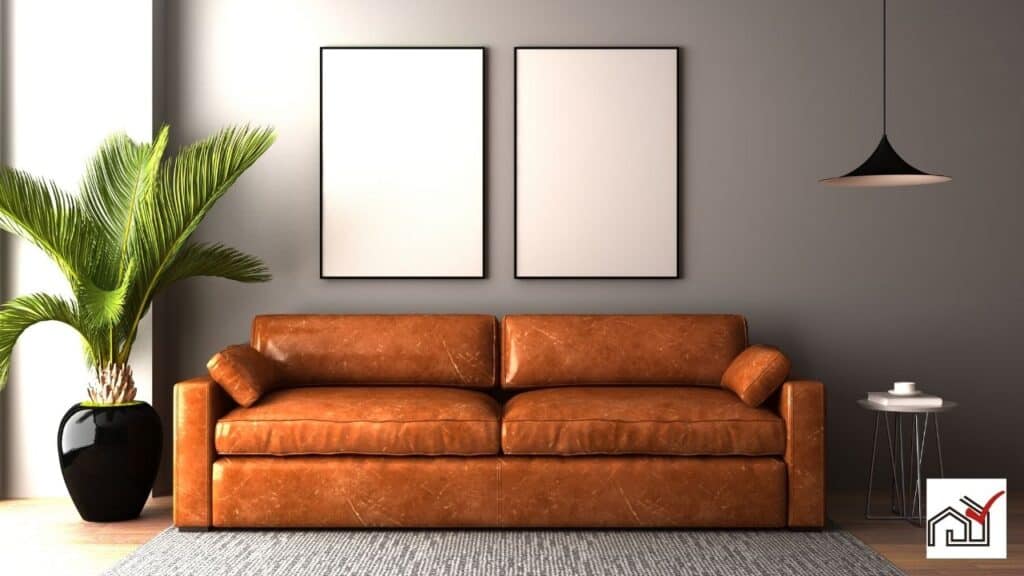Leather couches peel mainly due to poor maintenance, such as not conditioning the leather regularly, which causes it to lose moisture and essential oils. Exposure to direct sunlight and extreme temperatures can also damage the leather and lead to peeling.
The quality of the leather affects its durability; high-quality leather is less prone to peeling than lower-quality varieties like bonded leather, which peels more easily because of its composite nature and synthetic layers.
Proper care, considering environmental conditions and using quality leather, can help prevent peeling.
Understanding Leather Quality
Leather quality is a key factor in the durability and longevity of leather couches. Genuine leather, sourced from animal hides, has natural resilience that tanning enhances. Bonded leather, however, is a mixture of leather scraps and polyurethane that mimics the look of leather but lacks the same elasticity and strength.
Full-grain leather, which retains the hide’s surface, is strong and unique in appearance due to less processing. It resists peeling better than bonded leather, which can peel as its synthetic parts break down.
Proper care is essential for genuine leather’s lifespan. Regular conditioning is necessary to keep it from cracking and peeling, similar to how skin needs hydration. Consistent maintenance protects the appearance and structure of leather furniture.
Factors Contributing to Peeling
Leather couches peel for various reasons, including material quality and maintenance. Durable and comfortable, leather furniture can still peel if not cared for properly or made from low-quality materials. Bonded leather, made from leather scraps and a polyurethane binder, is prone to peeling due to its reduced elasticity compared to full-grain leather.
Harsh cleaning products can further damage leather, breaking down protective sealants and hastening deterioration. Proper leather conditioners help maintain flexibility and prevent drying, which can cause peeling. Regular use of suitable conditioners can prolong furniture life.
Faux leather, consisting of materials like polyurethane or polyvinyl chloride, can also peel. Although it looks like real leather, it lacks genuine leather’s durability and can lose its surface layer over time. Repair kits can temporarily fix peeling in faux leather.
Environmental factors such as humidity affect leather care. Both excessive dryness and humidity can damage leather, making it more likely to peel. It’s best to keep leather furniture in areas with consistent humidity levels to reduce the risk of peeling.
The Role of Maintenance
Maintenance is essential to prevent leather couches from peeling. It is important to regularly clean leather furniture with high-quality leather cleaners to remove dust, body oils, and other substances that may damage the leather.
The type of leather is also important. Bonded leather, which is a mix of leather scraps and polyurethane, peels more easily than full-grain leather, making maintenance even more crucial to delay peeling.
Leather conditioners are necessary to keep the leather flexible and moisturized, helping to prevent dryness, cracking, and peeling. Using sofa covers can protect the leather from excessive wear and tear.
Immediate action should be taken to clean spills or stains to avoid the leather absorbing damaging substances.
Bonded Vs. Genuine Leather
Bonded leather is a less expensive material made from scraps of animal hide bonded with adhesive. It has a synthetic layer on the surface that can peel under stress, revealing the material underneath. This makes bonded leather less durable compared to genuine leather, which is made from a single piece of animal hide and is of higher quality.
Genuine leather is more resistant to peeling and cracking, especially with proper maintenance. High-quality genuine leathers undergo treatments that enhance their durability. Although bonded leather may be initially cheaper, genuine leather typically offers greater longevity and is a better long-term investment.
It is important for consumers to understand that genuine leather products, with appropriate care, can last many years without the peeling common to bonded leather.
Repairing Peeling Leather
To fix peeling on a leather couch, the type of leather must be determined. For genuine leather, specialist cleaners can remove damaged areas. Bonded or fake leather often peels due to a deteriorating base and may require a professional to reapply adhesives and coatings. DIY repair kits are available, but using a leather binder post-repair is recommended for added strength.
Regular care, including conditioning and sealant application, can prevent peeling. In cases of extreme damage, professional repair, replacement, or using sofa covers might be necessary. It’s important to use the correct cleaning products to avoid worsening the peeling.
Preventative Measures for Longevity
Proactive care, such as regular conditioning and protective measures, significantly increases the lifespan of a leather sofa. Preventative actions help maintain the material’s quality and prevent peeling. High-quality leather is more durable and less prone to wear than lower-quality faux leather, which may peel due to poor quality and construction.
Using a quality leather conditioner is key to keeping the sofa in good shape. Regular conditioning maintains the leather’s suppleness and prevents drying and cracking that can cause peeling. Specialist leather cleaners can also remove damaged pigments or finishes, aiding in the material’s preservation.
Sofa covers provide additional protection against spills, sunlight, and other hazards, while also allowing for a refreshed appearance, especially for faux leather sofas with visible wear. These covers can hide flaws and prolong the life of the furniture.
Routine maintenance is essential for preserving a leather sofa. This includes avoiding direct sunlight and heat sources, which can hasten deterioration, and keeping the surface clean to prevent scratches from abrasive particles. By following these preventative measures, leather furniture owners can ensure its longevity and continued comfort.




